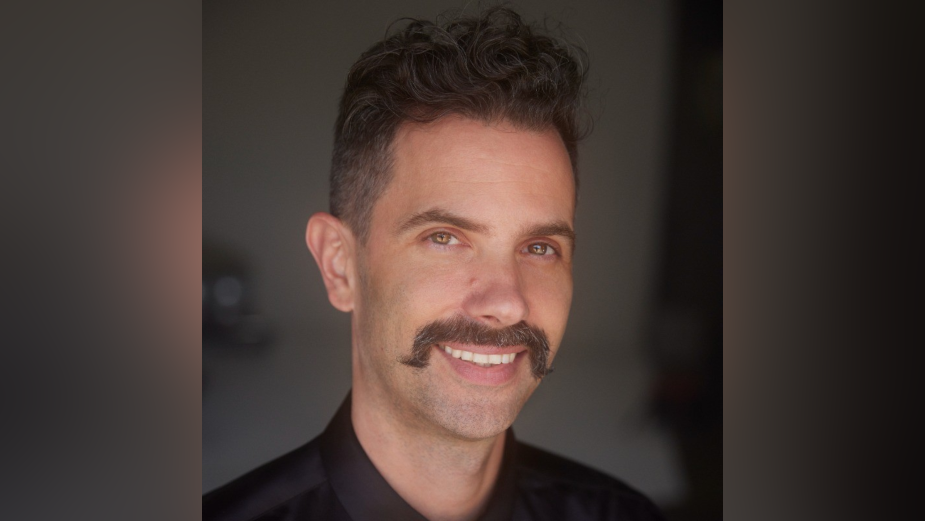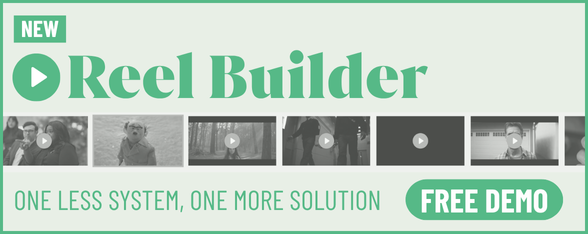
The Directors: Matt Boman

Matt Boman is a cinema shaman, a labourer of light, sorcerer of sound. Infinitely intrigued with the human condition and the natural world, Matt’s servitude lies with storytelling. Utilising his dynamic fusion, a director who operates camera and edits, Matt is able to explore through cinema the myriad facets of human expression, often turning his laser beam focus to underdog subjects, fringe characters and unexpected heroes. With a penchant for humans hurtling through space, be it drag queens or drag racers, high performance humanity is a subject he gravitates towards. To him, the fusion of motion and imagery is a transcendent language, capable of conveying emotions and ideas far beyond the limitations of spoken words.
His creations are a symphony of visceral and dynamic expressions, juxtaposed with introspective subtlety, and irresistible charm. Throughout his journey, he has left his artistic signature on projects with monumental entities like Apple, eBay and Warner Records and collaborated with luminaries Lil Nas X, Creedence Clearwater Revival and Dita Von Teese, becoming a magnet for creative legends and avant-garde innovators alike.
Name: Matt Boman
Location: Los Angeles
Repped by/in: WORKPRODUCT
LBB> How do you approach creating a treatment for a spot?
Matt> I treat pitching and creating treatments as almost a military operation, using as much strategy as possible to ensure I am awarded the job. First, I meticulously research the agency and/or client I’m pitching in order to provide them with multiple compelling reasons why I’d be the best director to bring their story to life.
From having an irresistible idea to fully understanding and expressing the tone of the piece to showing examples of picture-perfect filming locations and behind-the-scenes images of my crew in action on similar spots help to seal the deal. That, combined with top-notch graphic design, loads of linguistic picture painting, and even letting a little humour and soul seep in, help my treatments stand out on the top of the stack. That is the goal, at least!
LBB> If the script is for a brand that you’re not familiar with/ don’t have a big affinity with or a market, you’re new to, how important is it for you to do research and understand that strategic and contextual side of the ad? If it’s important to you, how do you do it?
Matt> That is completely important to me. It’s really the first step in the process and probably the most important one. Spending days on a pitch that’s way off the mark is a monumental waste of time and energy, so I frontload my pitching process with targeted research. I consider the overall look and feel of the brand and previous spots they have made, and even do a little 'Instagram lurking' to get a sense of the people behind the brand so that I can tailor my approach for maximum impact and resonance.
LBB> For you, what is the most important working relationship for a director to have with another person in making an ad? And why?
Matt> Creatively, that person is my DOP and logistically, it’s my producer. Since film is a visual medium, the DOP is crucial to helping me bring the narrative to life and the person I probably spend the most time creatively collaborating with. However, considering filmmaking is 90% a logistical endeavour, at the end of the day, it’s the producer that I’m working with the most. Tackling the mundane tasks of the execution of a project isn’t always glamorous or fun, but it is how you get to set fully prepared. I feel lucky to get to work with so many talented right and left-brained people, as a fusion of both hemispheres is needed to create an outstanding product.
LBB> What type of work are you most passionate about - is there a particular genre or subject matter or style you are most drawn to?
Matt> I’ve noticed lately I tend to gravitate towards two types of subjects, physical performers and cars. The storytelling through the motion of athletes, acrobats, and automobiles lends itself to being filmed and creates a readymade, high visual impact. Also, the aspect of people pushing themselves to the limits, be it physical, mechanical, or both, has an inherent drama that I adore. I’d rather see (and create) dynamic shots of dynamic people doing dynamic things than another series of talking heads on screen. Don’t explain it, do it!
LBB> What misconception about you or your work do you most often encounter, and why is it wrong?
Matt> I often find myself thinking about a clip I saw of Martin Scorsese describing what the job of a director is: “I answer people’s questions, all day.” Contrary to popular belief, 95% of my craft unfolds well before the cameras roll. Directing for a project is a seemingly endless assembly line of treatments, storyboards, handling logistics, submissions, tweaks, and revisions that culminate in a brief dance of glory on set.
It's my goal to translate my vision into the minds of everyone who touches the project, from agency execs and clients to department heads and crew. This ensures that everyone's on the same page by the time we land on set, reducing surprises to near zero. Being super prepared on set allows you to get the shots you need faster, so you have more time to get creative and exceed expectations.
LBB> Have you ever worked with a cost consultant and if so how have your experiences been?
Matt> Aside from producers 'reigning me in' in terms of the scope and cost of my ideas (and usually being right), my experience with cost consultants has been so far rather limited.
LBB> What’s the craziest problem you’ve come across in the course of a production – and how did you solve it?
Matt> Thankfully, with careful planning and pre-visualisation of possible pitfalls beforehand, I have reduced most 'crazy problems' on a production to a low probability. Back in my days, starting out as a director on $500 music videos for friends, sure, there were many, but those problems taught me what to avoid or prepare for in the future. I tend to only learn lessons the hard way, through mistakes, and I’ve made so many along the way that they are much more rare these days. After all, as someone once said, “Problems are just opportunities in work clothes.” I try to keep that in mind in my process and realise the joy and privilege it is to not only be a working director but to be alive and able to feel anything at all.
LBB> What are your thoughts on opening up the production world to a more diverse pool of talent? Are you open to mentoring and apprenticeships on set?
Matt> YES! So much yes to this question. I strive to have as diverse a set as possible and know that is something we could all, myself included, improve upon. It’s not on BIPOC and LGBTQ+ filmmakers to break the walls of inclusion down; it’s on straight, white, male filmmakers like me to open the door! I always lend my time to filmmakers from marginalised communities and am currently seeking to mentor someone on my next project. For any filmmakers like me worrying about the time or budgetary constraints of doing so, just remember that we are padded by our generational wealth and privilege! There's no way we can refuse to help make filmmaking and the world a safe and fruitful environment for everyone.
LBB> How do you feel the pandemic is going to influence the way you work into the longer term? Have you picked up new habits that you feel will stick around for a long time?
Matt> Three words: the fist bump! All joking aside, I am a fan of, rather than driving across LA or having an email chain a mile long, having many quick and easy video chat calls with the necessary parties to get a production off the ground. I feel like video calls have become so ubiquitous in our lives that they have really streamlined things, and what’s better than streamlined?
LBB> Your work is now presented in so many different formats - to what extent do you keep each in mind while you’re working (and, equally, to what degree is it possible to do so)?
Matt> I often joke that every shoot these days seems to need to simultaneously be a feature film, a vertical video for social, a BTS featurette, a fashion spread, a music video, and TikTok. In today’s world, it’s imperative we keep in mind multiple formats for every shoot, whether they are required or just something to be aware of the possibility for. Filming for vertical while 'saving' for 16x9 seems annoying (and usually is), but I feel it’s the annoying things in life that teach us to adapt, learn and grow. In the future, I never want to look back on my current stances, how we look back on those naysayers who said one would want to watch movies with sound or in colour. Could you imagine being that guy? No way!
LBB> What’s your relationship with new technology and, if at all, how do you incorporate future- facing tech into your work (e.g. virtual production, interactive storytelling, AI/data-driven visuals etc)?
Matt> New tech merely provides more tools in the toolbox and is always a good thing. To me, having a negative opinion of it is irrelevant since the world will move on regardless of what you think about it. Has humanity ever put a technology back on the shelf once it has emerged? I think that postulating about AI going away is a fool’s errand and will leave the postulator behind in the race to achieve. Although cumbersome, virtual production allows productions to exist in places and spaces where they may not have existed and by people not normally with access – and for that reason, I think it’s a fantastic innovation.













